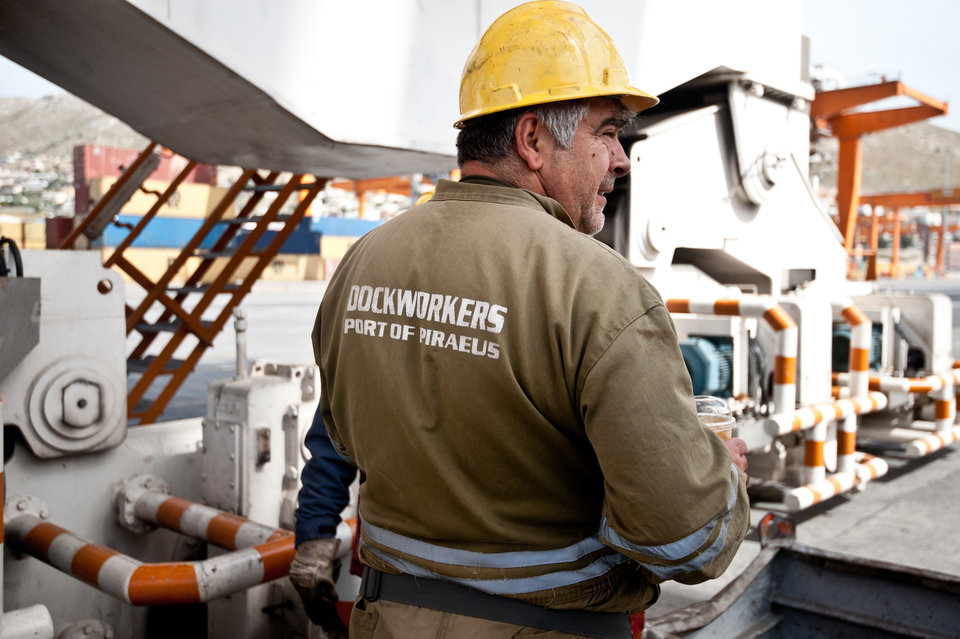
“Forbearance and conscientiousness, combined with the excessive heat, and the lack of all the necessary means of personal protection, led our to our colleague’s death, instead of life, because she was struggling to collect garbage,” said Nikos Trakas, President of the municipality workers union POE-OTA, in an interview confirming the death by heart attack of Daniela Preloretzou, a 62-year-old female sanitation worker, on Friday, June 30, during her second shift in less that 24 hours under a phenomenal heatwave in Athens. Two days later, on Sunday, July 2, a 45-year-old male sanitation worker got injured at work in Thessaloniki and then admitted to the intensive care unit of a local hospital.
The two incidents briefly catapulted the question of accidents in the Greek workplace and my assumption that their figures have skyrocketed in recent years due the economic crisis. Using records from the Hellenic Statistical Authority (ELSTAT) in .csv format, I started gathering preliminary information about accidents in the Greek workplace from 2005 — three years before the global economic crisis began and five years before Greece signed the first Referendum with its European creditors — until 2015, when ELSTAT’s reference period ends. Well, it didn’t take long before I realized that my initial assumption was rather naive.
Instead of a dramatic increase, there has been a great reduction in the accident rate by almost 96% since the beginning of my reference period, from 10,684 in 2005 to 3,762 in 2013. But why?
According to Kleanthis Chatzinikolaidis, President of the National Association of Labour Inspection (SEPE), such a reduction in the number of work-related injuries is linked to two reasons. First, up until 2009, companies, as part of their investments in safety measures, were buying new equipment that complied with European regulatory requirements and were taking good care of them. The second reason is linked to the reduced building activity in Greece during the first years of the crisis. Less buildings mean less accidents for workers. Indeed, as we can see in the chart below, in both 2014 and 2015 ‘Construction’ and ‘Manufacturing’ were among the most harmed sectors, with the overall accident rate going up by 10% every year since 2013, mainly because of the lack of funding for safety measures and new equipment from 2010 onwards.
As far as the most important consequence of an accident at work — whether it is fatal or not — is concerned, in 2014, out of 4,241 in total, 46 fatalities were recorded. The corresponding number fell slightly in 2015 to 45 fatal accidents, out of 4,459 in total.
Although, many of the accidents involve male workers, about one third of the victims are female. Out of 4,459 accidents at work, which was the total number in 2015, 3,237 accidents refer to men and 1,222 to women, while the corresponding figures for 2014 were 3,127 and 1,114, respectively, the total number of accidents being 4,241.
As regards the occupation of the victims, on the basis of the available data for 2014 and 2015, it is observed that most of the victims belong to the occupation category ‘Elementary Occupations’, followed by ‘Plant and Machine Operators’. This should come with no surprize, given that both occupations are related to ‘Manufacturing’ and ‘Construction’, the two most harmed sectors during the same period so to speak.
It is also worth noting, when it comes to the type of injury, that from 2005 to 2015 there have been 2,209 burns and 2,070 amputations. As you can see in the chart below, the most frequent types of injury during the same period are ‘Fractures’ (23,804 accidents), ‘Rupturing Wounds’ (18,504 accidents), ‘Ruptures’ (17,104 accidents), and ‘Strains’ (6,429 accidents).
Finally, as regards the parts of the body that were more frequently injured, ‘Wrist and Fingers’ were by far the most injured (21,670 accidents), followed by ‘Foot’ (8,198 accidents), and ‘Joint of Foot and Tibia’ (7,123 accidents).